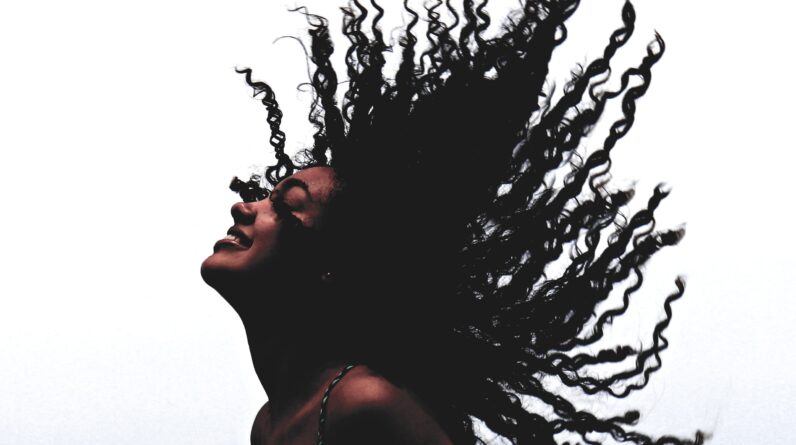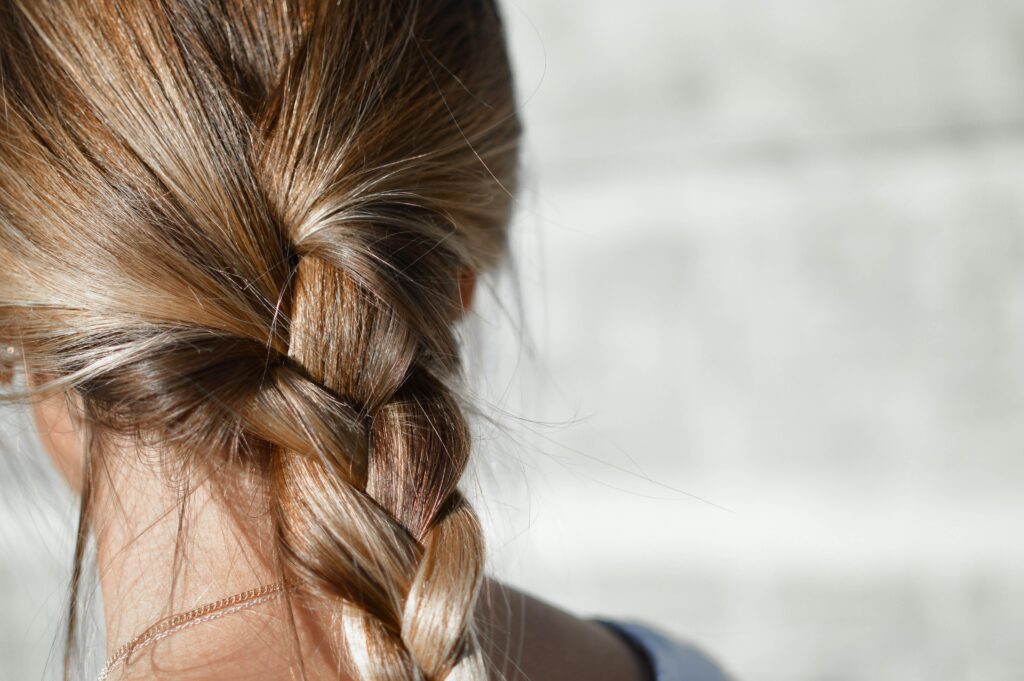
Disclaimer: This post may contain affiliate links. As an Amazon Associate, we earn from qualifying purchases.
Taking care of your natural hair can be a rewarding and fulfilling journey. With effective hair regimens for natural hair, you can achieve healthy, vibrant locks that showcase your unique beauty. So, how can you create an effective hair regimen for your natural hair? It’s all about understanding your hair’s needs and providing it with the essential care it deserves.
Start by identifying your hair type and texture. This will help you choose the right products and techniques to address specific concerns. Whether you have coily, curly, or wavy hair, a proper regimen should include a gentle cleansing routine with sulfate-free shampoos or co-washing. Follow up with a nourishing conditioner to replenish moisture and prevent breakage. Incorporating a deep conditioning treatment once a week can also help restore hydration and promote hair elasticity.
Additionally, it’s important to develop a consistent moisturizing routine to keep your strands hydrated and avoid excessive dryness. This can be achieved by using leave-in conditioners, hair oils, or creams, depending on your hair’s unique needs. Regularly trimming your ends can help prevent split ends and maintain overall hair health. Finally, protect your hair at night by sleeping on a satin or silk pillowcase, or by using a gentle hair bonnet or scarf to reduce friction and minimize breakage.
By establishing effective hair regimens for natural hair, you can nurture and enhance your locks, showcasing their natural beauty. Remember to be patient and consistent, as it may take time to find the perfect products and techniques that work best for you. Embrace your journey and enjoy the process of discovering what your hair loves and needs to thrive. So go ahead, embrace your natural hair and let it shine with confidence and radiance!
Understanding Natural Hair
Defining Natural Hair
Natural hair refers to hair that has not been chemically treated or altered in any way. It is hair that grows out of the scalp in its natural state, without the use of relaxers, perms, or other chemical processes. Natural hair is characterized by its unique textures and patterns, which can range from loose waves to tight coils. Embracing and caring for natural hair has become an empowering movement for many individuals, celebrating the beauty and versatility of their own unique hair.
Common Challenges with Hair Regimens for Natural Hair
While natural hair can be a source of pride and self-expression, it also comes with its fair share of challenges. One of the most common challenges faced by individuals with natural hair is managing its texture and keeping it moisturized. Natural hair tends to be drier and more susceptible to damage, making it necessary to establish an effective hair care routine. Other challenges may include dealing with shrinkage, frizz, and finding hairstyles that work well with the hair’s natural texture.
The Importance of Hair Regimens
A hair regimens for natural hair refers to a set of practices and products that individuals with natural hair use to care for their hair. Having a consistent and well-tailored hair regimen is crucial for maintaining the health and beauty of natural hair. A proper hair regimen not only addresses common challenges but also promotes hair growth, moisture retention, and overall hair health. By understanding and implementing effective hair regimens, individuals can unlock the full potential of their natural hair and enjoy the benefits it brings.
Building an Effective Hair Regimen
Identifying Your Hair Type
Before building a hair regimens for natural hair, it is essential to identify your hair type. Natural hair can be classified into various types, ranging from straight to kinky. Understanding your hair type will help you determine the specific needs and characteristics of your hair, enabling you to choose the right products and techniques for your regimen. Hair types are typically categorized using a numerical system, such as the widely known Andre Walker Hair Typing System.
Cleansing: Shampooing and Co-Washing
Cleansing is a vital step in any hair regimen. For natural hair, finding the right balance between keeping the hair clean and preventing excessive moisture loss is key. Many individuals opt for sulfate-free shampoos, as sulfates can strip the hair of its natural oils, leading to dryness and damage. Co-washing, on the other hand, involves using conditioner to cleanse the hair instead of shampoo. Co-washing can be particularly beneficial for those with drier hair types, as it helps retain moisture while cleansing.
Conditioning: Deep Conditioning and Leave-In
Conditioning is an essential part of any natural hair regimen. Deep conditioning treatments help to replenish moisture, repair damage, and improve the overall health of the hair. It is recommended to use a deep conditioner at least once a week, or more frequently for excessively dry or damaged hair. Leave-in conditioners, on the other hand, are lighter formulations that can be applied after washing and conditioning to provide ongoing moisture and detangling benefits throughout the day.
Moisturizing: L.O.C. or L.C.O. Method
Moisturizing is crucial for maintaining the health and vitality of natural hair. The L.O.C. (Liquid, Oil, Cream) and L.C.O. (Liquid, Cream, Oil) methods are popular techniques for sealing in moisture. The L.O.C. method involves applying a water-based leave-in conditioner, followed by an oil to lock in the moisture, and finally, a cream or butter-based product to provide additional moisture and hold. The L.C.O. method is similar but swaps the order of the cream and oil. Experimenting to find which method works best for your hair is key.
Sealing: Essential Oils and Butters
Sealing in moisture is a crucial step in hair regimens for natural hair. Essential oils, such as coconut oil, jojoba oil, or argan oil, can be used to seal in moisture and provide additional nourishment to the hair and scalp. Butters, such as shea butter or mango butter, are also popular choices for sealing in moisture due to their ability to create a protective barrier. Finding the right sealing product for your hair type is essential to lock in moisture and prevent dryness and breakage.
Protective Styling
Protective styling plays an important role in maintaining the health and length of natural hair. These styles help to minimize manipulation and reduce exposure to external factors that can cause damage. Protective styles can include braids, twists, buns, or updos. It is crucial to ensure that protective styles are not too tight to prevent unnecessary tension and breakage. Additionally, regular moisturizing and gentle maintenance of the style will help to preserve the health of the hair.
Detangling
Detangling natural hair can be a challenging task. To minimize breakage and damage, it is important to detangle the hair with care. Using a wide-toothed comb or your fingers, start detangling from the ends of the hair and gradually work your way up to the roots. Apply a detangling spray or conditioner to make the process easier and less damaging. Patience and gentleness are key when detangling natural hair to avoid unnecessary breakage and knots.
Trimming
Regular trimming is an important aspect of a natural hair regimen. Trimming removes split ends and damaged hair, allowing for healthier and more manageable hair growth. It is recommended to trim the hair every 8-12 weeks, or as needed, to maintain the overall health and shape of the hair. If you notice excessive split ends or damaged sections, it is best to consult a professional stylist for a trim to avoid potential further damage.
Scalp Care
Caring for the scalp is essential for maintaining healthy natural hair. A healthy scalp provides the foundation for strong and vibrant hair growth. Regular cleansing of the scalp, either with shampoo or co-washing, helps to remove dirt, excess oils, and product buildup, promoting a clean and healthy environment for hair follicles. Additionally, incorporating scalp massages into your hair regimen can stimulate blood flow and promote hair growth.
Nighttime Routine
Establishing a nighttime routine is an often-overlooked but essential part of a natural hair regimen. At night, protecting the hair and maintaining moisture is crucial. Applying a leave-in conditioner or moisturizing product and covering the hair with a satin or silk bonnet or scarf can help to retain moisture, minimize friction, and reduce the risk of breakage while sleeping. Investing in a satin or silk pillowcase is also beneficial, as it helps to prevent moisture loss and friction.

Natural Haircare Products and Ingredients
Sulfate-Free Shampoos
Sulfate-free shampoos have gained popularity within the natural hair community due to their ability to cleanse without stripping the hair of its natural oils. Sulfates, such as sodium lauryl sulfate (SLS), can be harsh and drying on natural hair, causing it to become brittle and prone to breakage. Opting for sulfate-free shampoos helps to maintain the moisture balance of the hair, keeping it healthier and more manageable.
Silicone-Free Conditioners
Silicones are often found in conventional hair conditioners and can create a barrier on the hair, preventing moisture from properly penetrating the strands. While they may initially give the hair a smooth and shiny appearance, long-term use of silicones can lead to product buildup and dryness. Using silicone-free conditioners allows the hair to absorb moisture more effectively and ensures the hair remains nourished and hydrated.
Natural Oils
Natural oils are a staple in many natural hair regimens. They are rich in essential fatty acids and nutrients that nourish and moisturize the hair. Some popular natural oils for natural hair include coconut oil, jojoba oil, argan oil, and olive oil. These oils can be used as pre-shampoo treatments, sealants, or added to deep conditioning treatments to provide extra hydration and nourishment to the hair.
Shea Butter
Shea butter has gained significant popularity in natural haircare due to its moisturizing and protective properties. It is an excellent sealant that helps to lock in moisture, prevent dryness, and minimize breakage. Shea butter is rich in vitamins and fatty acids that nourish the hair and promote healthy growth. It can be used on its own or incorporated into DIY hair masks and styling products.
Aloe Vera
Aloe vera is a versatile plant that offers numerous benefits for natural hair. Its gel-like substance is known for its moisturizing and soothing properties. Aloe vera can help to hydrate the hair, reduce scalp inflammation, and promote a healthy scalp environment for optimal hair growth. It can be used as a leave-in conditioner, added to deep conditioning treatments, or even applied directly to the scalp.
Glycerin
Glycerin is a humectant that attracts moisture to the hair, helping to keep it hydrated and moisturized. It is commonly found in hair products, such as leave-in conditioners and moisturizers, due to its ability to retain moisture in the hair shaft. However, it is important to note that the effectiveness of glycerin can vary depending on the humidity levels in the environment. In drier climates, it is advisable to use glycerin in combination with other moisturizing ingredients to prevent moisture loss.
Protein Treatments
Protein treatments are essential for maintaining the strength and integrity of natural hair. Proteins, such as keratin, help to repair damaged hair, improve elasticity, and reduce breakage. Protein treatments can be done at home using DIY recipes or with store-bought protein treatments suitable for natural hair. It is important to note that excessive use of protein treatments can lead to protein overload, which can result in dry and brittle hair. Balancing protein and moisture is key for optimal hair health.
Ayurvedic Herbs
Ayurvedic herbs, derived from traditional Indian medicine, have gained popularity in the natural haircare community for their various benefits. Popular Ayurvedic herbs for natural hair include amla, brahmi, neem, and henna. These herbs can be used in the form of powders, rinses, or oils to promote hair growth, strengthen and condition the hair, and address specific scalp conditions. Incorporating Ayurvedic herbs into your hair regimen can provide natural and holistic care for your natural hair.
Video by Little House On The Mountain
Maintaining Length and Retaining Moisture
Protective Styles for Length Retention
Protective styles play a crucial role in maintaining length in hair regimens for natural hair. These styles, which involve low manipulation and the tucking away of the ends, help to minimize breakage and protect the hair from external damage. Protective styles can include buns, twists, braids, or updos. By reducing the amount of direct manipulation and exposure to elements, such as heat and friction, protective styles allow the hair to grow longer without becoming damaged or susceptible to breakage.
Low Manipulation Hairstyles
Low manipulation hairstyles are a great option for those seeking to retain moisture and promote healthy hair growth. These hairstyles require minimal daily maintenance and decrease the risk of damage and breakage. Examples of low manipulation hairstyles include bantu knots, flat twists, or twist-outs. By reducing the need for excessive combing, brushing, or styling, these hairstyles enable the hair to retain its moisture and prevent unnecessary stress.
Preventing Breakage
Breakage is a common concern for individuals with natural hair. To prevent breakage, it is important to handle the hair with care and practice gentle techniques. Using wide-toothed combs or your fingers for detangling, avoiding excessive heat styling, and opting for protective styles are effective strategies for minimizing breakage. Additionally, keeping the hair moisturized and well-nourished through proper conditioning and sealing techniques will contribute to its overall strength and resilience.
Nighttime Haircare Routine
Developing a nighttime haircare routine is essential for maintaining length and retaining moisture in natural hair. Dry and frizzy hair can be a result of moisture loss during sleep. Applying a leave-in conditioner or moisturizer before bed and protecting the hair with a satin or silk bonnet or scarf can help to seal in moisture and reduce friction. Additionally, sleeping on a satin or silk pillowcase will minimize moisture loss and preserve the integrity of your natural hair.
Deep Conditioning for Moisture
Deep conditioning treatments are a critical component of maintaining moisture in natural hair. Deep conditioners are formulated to penetrate the hair shaft, providing intense hydration and nourishment. It is recommended to incorporate deep conditioning treatments into your hair regimen at least once a week or more frequently for excessively dry or damaged hair. Deep conditioning helps to replenish moisture, improve elasticity, and restore the softness and manageability of natural hair.

Addressing Common Natural Hair Concerns
Frizz and Humidity
Frizz and humidity often go hand in hand, posing a challenge for individuals with natural hair. To combat frizz in humid conditions, it is important to prioritize moisture retention. Using anti-frizz products, such as serums or creams, can help to seal the hair cuticles, preventing excessive moisture absorption from the environment. Additionally, protective styles and updos can minimize exposure to humidity, reducing the likelihood of frizz.
Shrinkage
Shrinkage is a natural characteristic of curly and kinky hair types. It refers to the hair’s ability to contract or shrink, making it appear shorter than its actual length. Embracing shrinkage is a fundamental part of accepting and loving natural hair. If desired, stretching techniques, such as twist-outs, braid-outs, or the use of heatless stretching methods, can temporarily elongate the hair, allowing it to showcase more of its true length.
Thinning Hair
Thinning hair can be a concern for some individuals with natural hair. Hair thinning can be caused by a variety of factors, including genetics, age, excessive manipulation, or hair damage. To address thinning hair, it is important to focus on overall hair health. This includes establishing a balanced hair regimen, incorporating protein treatments to strengthen the hair, and practicing gentle techniques to minimize breakage. If thinning persists, consulting a professional stylist or dermatologist is recommended.
Dryness and Hydration
Dryness is a common concern for natural hair due to its texture and the nature of curly and kinky hair types. Hydration is key to maintaining healthy, moisturized natural hair. It is important to incorporate a variety of moisturizing techniques, such as deep conditioning, the L.O.C. or L.C.O. method, and regular moisturizing with water-based products. Additionally, protecting the hair from excessive heat styling, excessive manipulation, and harsh weather conditions will help to prevent dryness and maintain optimal hydration levels.
Creating a Personalized Hair Regimen
Trial and Error
Creating a personalized hair regimens for natural hair involves some trial and error. What works for one person may not necessarily work for another. Embracing your natural hair journey requires patience and a willingness to experiment with different products, techniques, and styles. It is important to note that everyone’s hair is unique, and it may take some time to find what works best for you. Be open to learning and adapting along the way.
Observing Your Hair’s Response
To build an effective hair regimens for natural hair, it is crucial to pay attention to how your hair responds to different products and practices. Observe how your hair looks and feels after each step in your regimen. Does it feel moisturized? Does it appear healthy and vibrant? By regularly assessing your hair’s response, you can make informed decisions about which products and techniques are beneficial and which ones may need to be adjusted.
Adjusting Products and Techniques
As you continue on your natural hair journey, it is important to remain flexible and open to adjusting your regimen. Natural hair needs can change over time, influenced by factors such as the weather, lifestyle changes, and hormonal fluctuations. If you notice that certain products or techniques are no longer delivering the desired results, don’t hesitate to make adjustments. Experiment with different products, alternative application methods, or new styling techniques to find what works best for your hair at any given time.
Consistency and Patience
Building an effective hair regimen requires consistency and patience. It may take time for your hair to adjust to new products or techniques, and visible results may not be immediate. Stick to your chosen regimen for a reasonable amount of time before making major changes. Consistently following your hair regimen will allow you to assess its effectiveness and make gradual improvements over time. Patience is key in achieving healthy, long, and vibrant natural hair.
In conclusion, understanding and implementing effective hair regimens for natural hair is crucial for maintaining the health, length, and beauty of natural hair. By defining natural hair, addressing common challenges, and recognizing the importance of personalized hair care routines, individuals can embrace and celebrate their unique hair textures and patterns. Building an effective hair regimen involves identifying hair type, incorporating cleansing, conditioning, moisturizing, sealing, and scalp care practices, and utilizing natural hair care products and ingredients. By maintaining length, retaining moisture, and addressing common concerns, individuals can create a personalized hair regimen that promotes the health and vitality of their natural hair. Through trial and error, observing hair responses, adjusting techniques, and embracing consistency and patience, individuals can cultivate a successful natural hair journey that brings out the best in their unique hair.
As an Amazon Associate, we earn from qualifying purchases.















